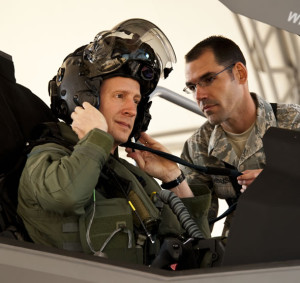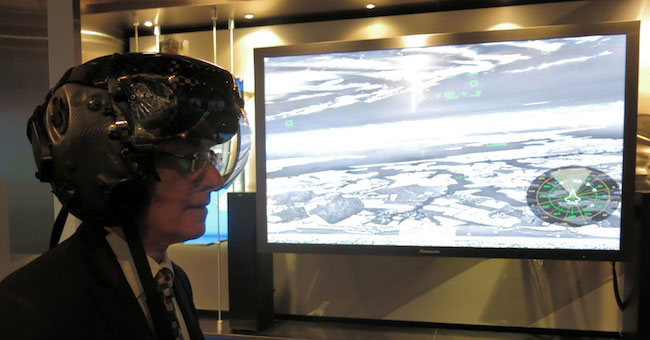

The F-35 Joint Program Office (JPO) today informed Lockheed Martin that it has decided to halt the development of the alternate F-35 helmet and focus exclusively on maturing the Vision Systems (VSI) 2nd Generation helmet currently used in training and testing. As a result, the program will recoup approximately $45 million in funds it had originally allocated for the development of the alternate helmet. Beginning with aircraft in Low Rate Initial Production (LRIP) lot 7, the program will introduce the improvements recommended by the technical review – this 3 Gen helmet that features an improved night vision camera, new liquid crystal displays, automated alignment and software enhancements.
In 2011, program and industry officials acknowledged that there were technical issues facing the principle helmet system. Among these issues were jittering in some of the images displayed to the pilot, particularly in night condition. To ensure viable combat capability was available when needed, the program began a dual-path development plan as a risk-management strategy in the event maturity issues facing the Gen 2 helmet could not be resolved. BAE Systems began developing the alternate helmet in September 2011.
“The government’s decision to proceed exclusively with the principle helmet is indicative of their confidence in the helmet’s performance and the successful resolution of previously identified technical challenges,” said Lorraine Martin, Lockheed Martin Executive Vice President and General Manager of the F-35 Lightning II Program. “To date, more than 100 F-35 pilots have flown more than 6,000 flights and 10,000 hours with the helmet, and their feedback has been very positive. Lockheed Martin and its suppliers will continue to focus on developing and delivering the helmet’s unprecedented capabilities to the warfighter in support of the services’ declaration of Initial Operating Capability.”
The F-35’s Helmet Mounted Display Systems (HMDS) provide pilots with unprecedented situational awareness; all the information pilots need to complete their missions – through all weather, day or night – is projected on the helmet’s visor. Additionally, the F-35’s Distributed Aperture System (DAS) streams real-time imagery from six infrared cameras mounted around the aircraft to the helmet, allowing pilots to “look through” the airframe.
The Gen 2 helmet that F-35 pilots currently use, which will meet the needs for the U.S. Marine Corps to declare the F-35B Initial Operational Capability in July 2015. The follow-on Gen 3 helmet will include an improved night vision camera, new liquid-crystal displays, automated alignment and software improvements. This new helmet will be introduced to the fleet in low rate initial production Lot 7 in 2016 – to meet program requirements to complete test and development in 2017.
The helmet developer VSI is a joint venture established between Rockwell Collins and Elbit Systems of America. VSI is also the OEM providing Boeing with the JHMCS helmet display sight, operated on most USAF combat aircraft.

















